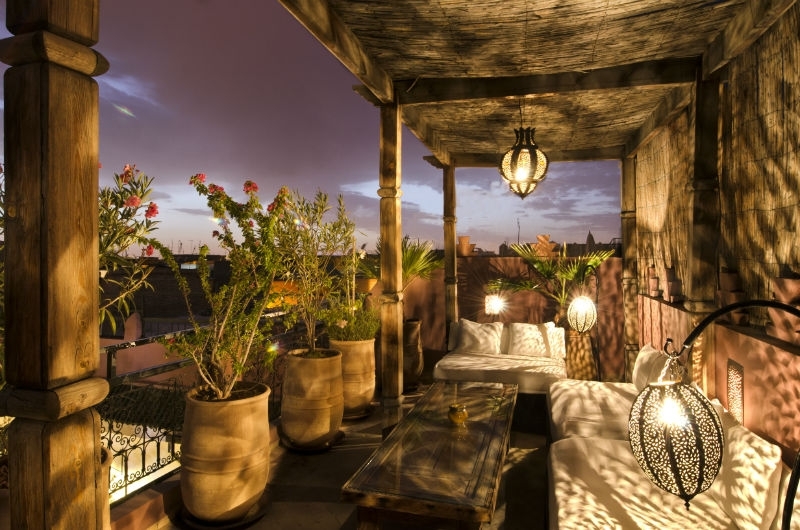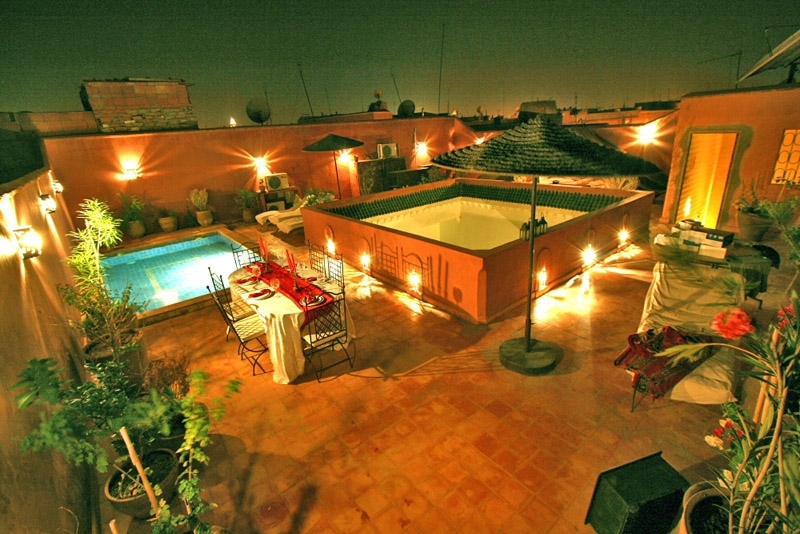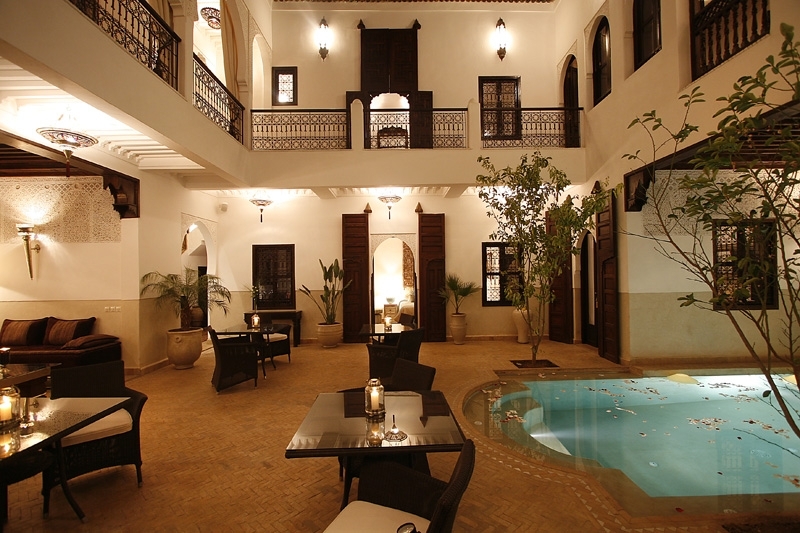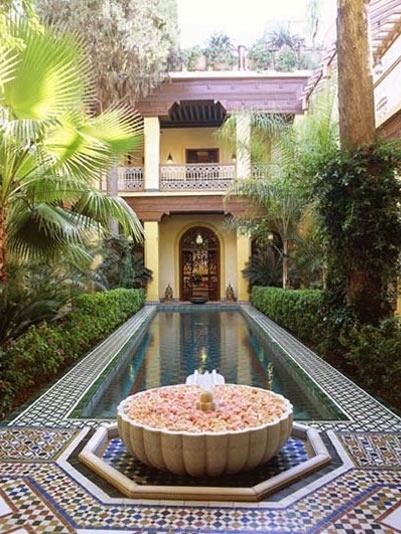The Independent Shops of the Marrakech Medina
September 7th, 2014

Although Marrakech is famous for the shops and stalls of the Souks, every single alleyway, derb or street in the red city is filled with wonderful shops. These shops range from unique boutiques selling handmade jewellery, woodcraft items or leather shoes to more standard ‘newsagent-style’ shops selling water, drinks and confectionary. The frequency of these Newsagent shops are very useful to visitors of Marrakech: the hot Moroccan sun means you always need a new bottle of water, and the frequency of the shops mean that you are always 5m away from a refreshing drink.
However, it is the small, independent boutiques, selling unique and handcrafted items, which are so unique to Marrakech. Perhaps the best way to explore these hidden gems is by strolling around the Medina and entering shops that take your fancy. However if you are interested in a bit more structure then download our free Hip Marrakech app from the AppStore which features a map and guide including suggested shops and four craft-themed medina walks – Iron and Clay, Leather, Needle and Thread and Woodworking – that guide you through hidden workshops and past the local shops selling the products.
Either way you experience the unique small shops of the Medina, our top tip is to be careful what you pick up: although all of the local shop owners are very friendly, they are also very good sellers and you may be convinced to buy something that you may only be interested in!!
Tags: Marrakech, Marrakech Medina, marrakesh, medina, shopping in marakech, things to do in marrakech, Tourism Marrakech
Posted in Marrakech, Photo a day | Comments Off on The Independent Shops of the Marrakech Medina
The Secrets of the Moroccan Tea
September 1st, 2014
Across the world, Morocco is famous for it’s delicious teas. In many cafés and restaurants there are often a wide variety of flavours and choosing what you want to order can often take a lot longer than expected. Although there are teas made from a range of ingredients including saffron, geranium, Rose petals and Louisa, it is of course mint that remains the most popular flavour. For Moroccans mint tea is the staple drink and it is common for locals to drink around 4 or 5 cups a day. The key to the perfect mint tea is a lot of sugar (sometimes over 4 cubes) and bubbles!! Yes, Bubbles!! If you ever drink a Mint tea with a Moroccan they will always tell you to pour it higher, using the catchphrase ‘bubbles are good, bubbles are very good’. It is a very difficult skill to master, let alone explain; so check out the video below for a clearer idea of how to pour your Moroccan tea.
Tags: how to make moroccan tea, mint tea, Moroccan mint tea, Moroccan Tea, moroccan tea pot, saffron tea, tea
Posted in Marrakech, Restaurants and Food | Comments Off on The Secrets of the Moroccan Tea
Marrakech by night in the Summer
August 20th, 2014
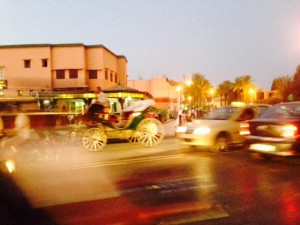
During the summer, local Marrakchis will always tell you that their city is better during the night. Many often chuckle at the idea of leaving indoors and traipsing around the streets during the day on the tourist trail, preferring to nap the day away inside. Indeed, Marrakech summers are always very hot; just this last week the temperature has hit 40ºC (104ºF) daily. In contrast to the dry heat of the day, the cool night provides the perfect backdrop for activity. It is because of this that the streets come alive at night.
At night, in both Gueliz and the Medina, the streets are the streets are filled with local Marrakchis alongside Moroccan and international tourists enjoying everything from a coffee at the local café to a mint tea on a terrace. One ‘must-see’ nightime activity is the world famous Jemaa el-Fna square with it’s food stalls, performers and storytellers. Here at Hip Marrakech we are not suggesting you become nocturnal, but we urge you to venture out at night in order to experience in full the magic of Marrakech.
Tags: Excursions Marrakech, holiday in morocco, islam, jemaa el fna, Jemaa El FNaa, local marrakech, Marrakech, marrakech at night, Marrakech culture, Marrakech Medina, marrakech riad, things to do in marrakech, top attractions marrakech
Posted in Marrakech, Photo a day | Comments Off on Marrakech by night in the Summer
The Traditional Moroccan Kaftan
August 14th, 2014
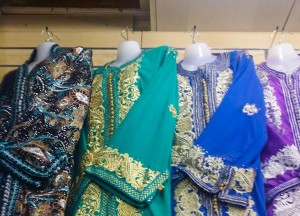
The Kaftan is perhaps the most common item of clothing worn by women across Morocco. It functions as a robe or tunic can be found in a variety of materials including Wool, Cashmere, silk and cotton. It is perhaps this versatility that makes the Kaftan so popular: it can be worn all year round and it can be created in fine materials for special occasions such as weddings or Eid, and it can also be made in hard-wearing, cheaper material for everyday use. Indeed, whilst talking to a Moroccan friend about this item of clothing, I was told that every Moroccan woman should have a kaftan to wear around the house it is part of their culture.
So, why not take a piece of Moroccan culture home with you after your stay in Marrakech? The Kaftan can be bought from a variety places including street-sellers, stalls in the Souks and the Ensemble Artisanal. Of course, the price of the Kaftan depends on the quality of the material. You can pick up a Kaftan for less than 100 Dirham (around £7), but better quality pieces adorned with fine embroidery can cost upwards of 400 Dirham (around £30). Whatever you spend, here at Hip Marrakech we can assure you that the Kaftan is a very comfortable and is the perfect item to relax around the house whilst remembering the your amazing holiday in Marrakech.
Tags: kaftan, moroccan clothes, moroccan dress, north african dress, souvenirs marrakech, traditional moroccan clothes
Posted in Marrakech, Photo a day | Comments Off on The Traditional Moroccan Kaftan
Don McCullin, The Marrakech Museum for Photography and Visual Art (MMP+), Badi Palace
August 13th, 2014
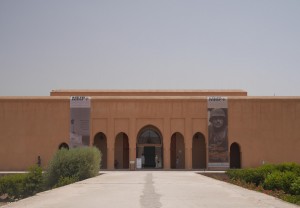
Don McCullin is an internationally renowned British photographer widely considered as a pioneer in the art of Photojournalism. His black and white photography documents a wide variety of subjects from traditional African tribes to warzones in Palestine, Vietnam and Northern Ireland, from stunning landscapes of his home in Somerset to images of urban strife in Britain. The Marrakech Museum for Photography and Visual Art (MMP+) are currently exhibiting wide-ranging solo-exhibition of his photographs at the wonderful Badi Palace and, last week, we went to check it out.
As most art exhibitions in Marrakech seems to be very much focused on Marrakech, Moroccan or, at the very least, North Africa, it initially felt strange looking at shots depicting the British dockyards, English countryside or foreign warzones in the traditional settings of the Badi Palace in the heart of the Medina. However, once we got over this initial bemusement, the quality of McCulin’s work shone through. Each photograph perfectly captures the dramatic and often violence nature of the subject. The simple, monochrome images possess a raw emotion that demands the viewer’s attention. Not unlike the traditional storytellers of Jemaa el-Fna, McCullin is a talented narrator, weaving the history and excitement of a certain moment into the fabric of his work.
Indeed, the Don McCullin exhibition demonstrates the exciting work MMP+ are currently undertaking. By exhibiting a talented international photographer, the gallery declares Marrakech as capable of hosting internationally respected artworks. That is, exhibitions that are not simply focused Marrakech, Morocco or North Africa. Yet MMP+ do not ignore local talent. In a room adjacent to the Don McCullen exhibition, there is a series of work demonstrating the best contemporary Moroccan Photographers.
Here at Hip Marrakech we are very excited about the future of the Marrakech Museum for Photography and Visual Art. Plans are in place to build a gallery that will sit adjacent to the historic Menara gardens, just outside the Marrakech Medina. Designed by renowned Architect Sir David Chipperfield, the prospective gallery looks absolutely stunning, mixing the traditional Riad style with a unique modern flair. The architectural plans are available for all to see over at the MMP+ site, we recommend you head over and have a look. MMP+ promise an exciting future for the Moroccan and North African art scene, watch this space!!
The Don McCullin exhibition runs until September 1st and can be found at the Badi Palace in the Medina, entrance to the exhibition is included in the admission charge for the palace itself. If you are visiting Marrakech before this date, we urge you to stop in at the Badi Palace and visit this exhibition.
Tags: Badi Palace, Don McCullin, mmp+, Morocco Photography, photography exhibition marrakech, photography marrakech, The Marrakech Museum for Photography and Visual Art (MMP+)
Posted in Cultural & Geographical, Marrakech, Photo a day | Comments Off on Don McCullin, The Marrakech Museum for Photography and Visual Art (MMP+), Badi Palace
Time-lapse of the Supermoon over Marrakech, August 2014
August 13th, 2014
One of the biggest talking points in yesterday’s papers and on social media was the occurrence of the so-called ‘Supermoon’. A Supermoon – or the ‘perigee moon’ to give it it’s technical name – is the correspondence of a full moon with the closest approach the moon makes to the earth during it’s orbit. This phenomenon means the moon appears bigger and brighter than usual, allowing for spectacular views and brilliant photos.
As clouds are a rare sight in Marrakech, Sunday’s Supermoon shone bright and clear above the red city, casting a haunting glow over the Medina. Although the ‘Supermoon’ is a ‘super rare’ occasion, a trip to Marrakech is sure to offer a once in a lifetime experience of a similar, magical caliber.
Tags: moon, moon time-lapse, supermoon, supermoon 2014, supermoon august 2014, supermoon time-lapse, time-lape, time-lapse, timelapse
Posted in Marrakech, Photo a day | Comments Off on Time-lapse of the Supermoon over Marrakech, August 2014
The World-Famous Moroccan pastries during Eid-al-Fitr
August 12th, 2014
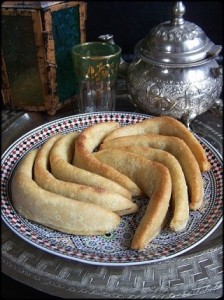
Moroccan pastries come in many different shapes and sizes and use many different ingredients. During the holy fasting month of Ramadan, the Chabakeya is most commonly eaten by Moroccans to break fast as it is sweet and contains a lot of energy. But even outside of Ramadan the pastries are still very popular: they are eaten at Moroccan weddings; celebrations like Eid-al-Fitr which starts today and even for everyday treats throughout the year.
It is easy to find Moroccan pastries in specialist shops throughout the Medina and in the Souks for a very reasonable price. In these shops the sweets and pastries are made by hand on site using recipes passed down through the generations.
They often displayed so nicely, in such an enticing way, that you have to be careful not to buy too many!!
Tags: eid, Eid-al-Fitr, food tourism, food travel, l'aid, moroccan deserts, Moroccan pastries, Moroccan sweets, morocco, pastries, ramamdan, sweets
Posted in Marrakech, Photo a day | Comments Off on The World-Famous Moroccan pastries during Eid-al-Fitr
Postcards and Letters from Marrakech
August 6th, 2014
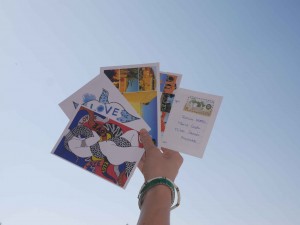
Isn’t it wonderful when you receive a postcard or handwritten letter from a loved one whilst they are holiday? There is nothing better than sharing the magic of Marrakech with a friend, family or loved one in a personal note. Furthermore, with the risk of sounding like a stamp collector, there is something quite enjoyable in discovering what local postal stamps and tracing the historical and cultural references they hold.
Sending a postcard or letter is usually cheap, but in Morocco it is especially so. For less than 10 Dirham (around 70p) you can send a postcard to anywhere in Europe. Stamps are sold in shops around the Medina, but the best place to buy them from – to ensure you don’t have to haggle for a stamp – is the central post office in Marrakech’s main square, Jemaa el-Fna. The yellow post boxes are also found out of the front of the building; a top tip from us is that there is no international postbox, so no confusion.
Tags: cheap postcards, Marrakech, marrakesh, morocco, postal services marrakech, postal services morocco, postal stamps, postal stamps in Marrakech, postcards, sending letters, sending postcards, stamps in marrakech
Posted in Marrakech, Photo a day, Reading and Literature | Comments Off on Postcards and Letters from Marrakech
Marrakech Reading List: ‘Humor and Moroccan Culture’ by Matthew Helmke
July 25th, 2014
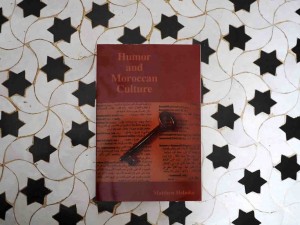
For a book that includes the word humour in the title, ‘Humour and Morocan Culture’ is not particularly a funny book; but that is not to say that it is not worth a read. The books author, Matthew Helmke, promises that his short book “will explore and discuss the hidden aspects of Moroccan culture, things that Moroccans seem to know inherently” and in this respect it certainly does deliver. The format of ‘Humour and Morrocan Culture’ is, in itself, fairly unique. Helmke translates a series of Morrocan jokes before discecting them, explaining the relevant social and cultural information that is necessary to understand the joke. This book offers a lot of interesting observations regarding Moroccan society and, once you get past Helmke’s somewhat egotistical writing style and the best obscenley large font size, ‘Humour and Morrocan Culture’ has a lot tlnoffer any visitor to Marrakech. All in all a quick read, but very satisfying.
Tags: book, comedy book, islam, Marrakech history, Moroccan history, morocco culture, travel book, visit marrakech, visit morocco
Posted in Marrakech, Photo a day | Comments Off on Marrakech Reading List: ‘Humor and Moroccan Culture’ by Matthew Helmke
The Figue de Barbarie
July 24th, 2014
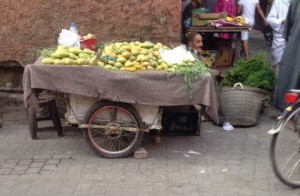
The Figue de Barbarie goes by many names: the prickly pear, Karmous, Handia, Opuntia ficus-indica or simply, and perhaps most obviously, the Fig. However, whatever you call it, it is delicious. The Figue de Barbarie, as we shall call it for now, is a popular summer fruit throughout Marrakech and, between May and October, it is sold throughout the Souks and the streets of Marrakech.
Although it originates from Mexico, the Figue de Barbarie now grows up in the wild areas and uplands of Atlas Mountains and in the sheer areas in Morocco. The Fig is especially popular when the Islamic month of Ramadan falls between May and October as it provides a much-needed source of potassium whilst quenching the thirst of many Marrakchis. However, this fruit is not just for eating: many Moroccans also use it as a cosmetic product. It is believed that the juice from the fig nourishes skin and even helps repair damaged skin. So, whether you eat it or rub it on your skin, why not book a trip to Marrakech to enjoy the Figue de Barbarie?
Tags: fig, figue, fruit, Marrakech culture, Marrakech Medina, Moroccan food, Ramadan, summer, travel, visit marrakech, visit morocco
Posted in Marrakech, Photo a day | Comments Off on The Figue de Barbarie

